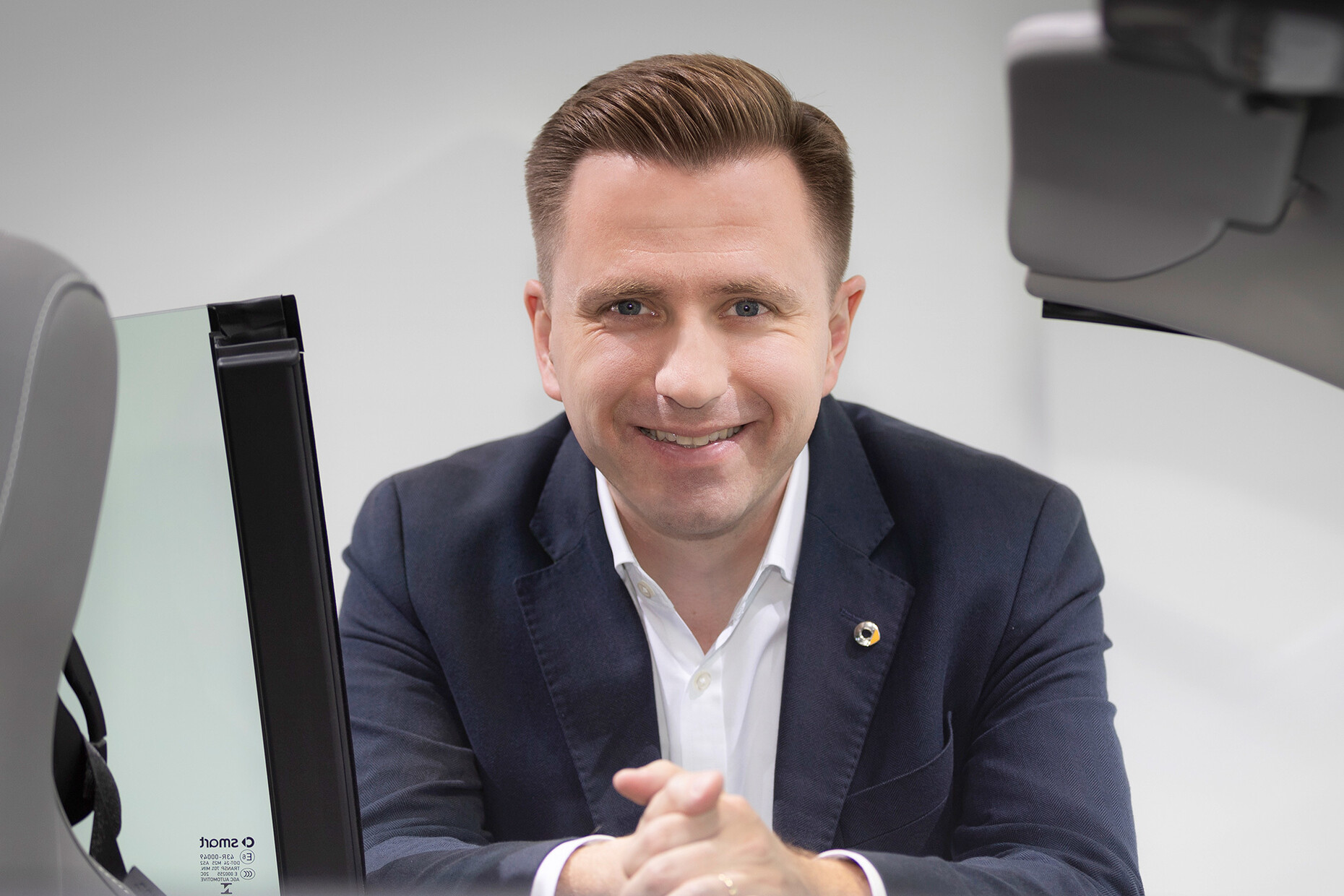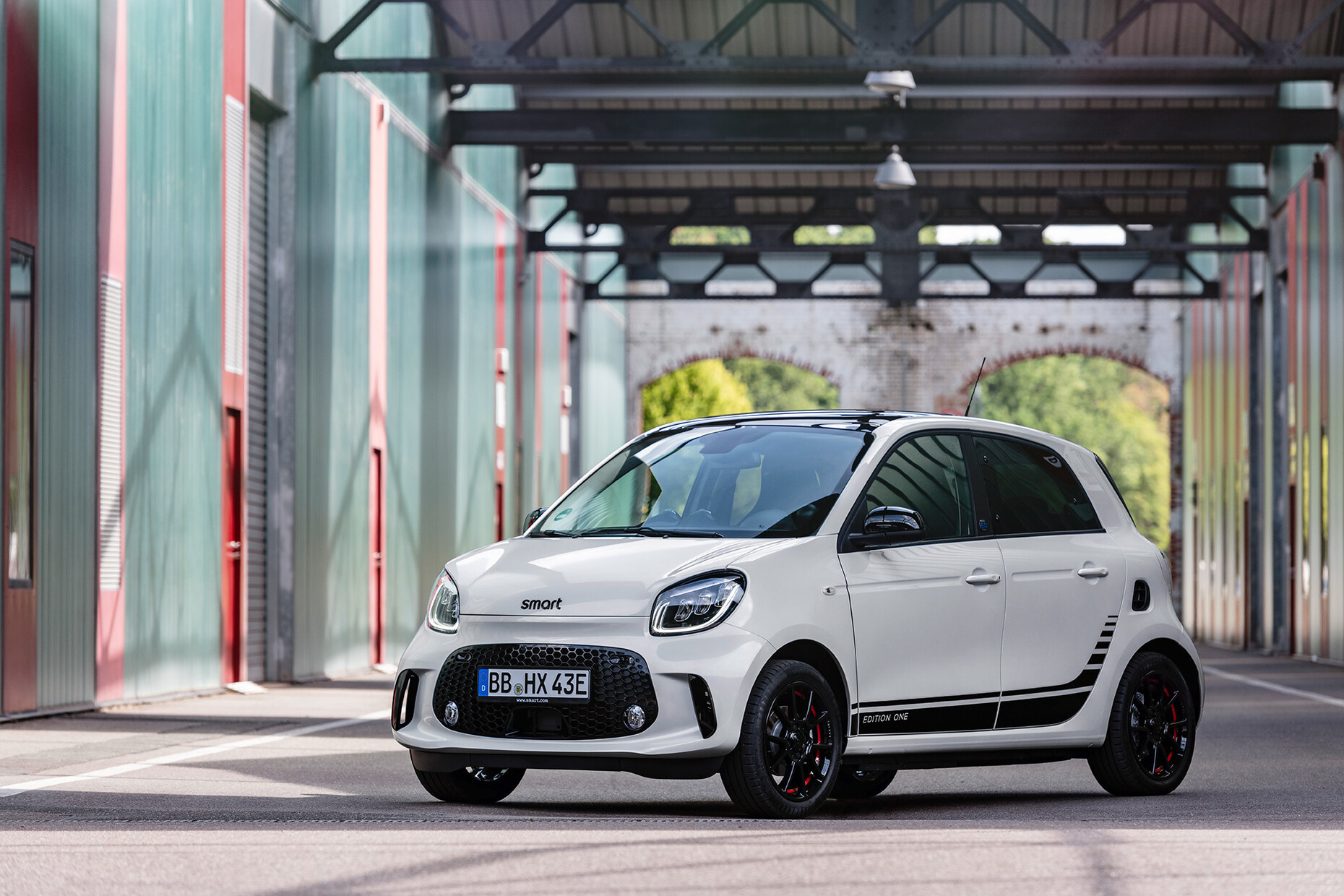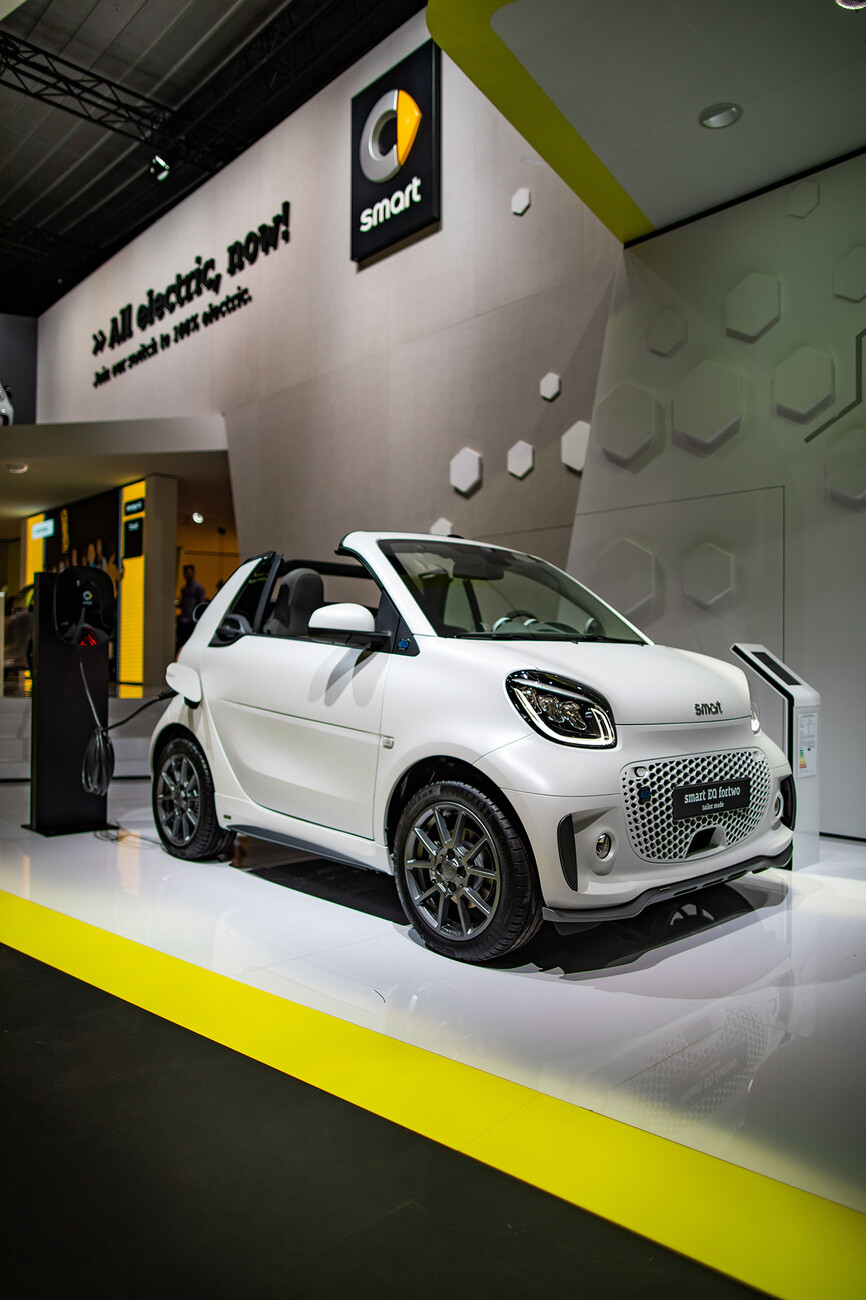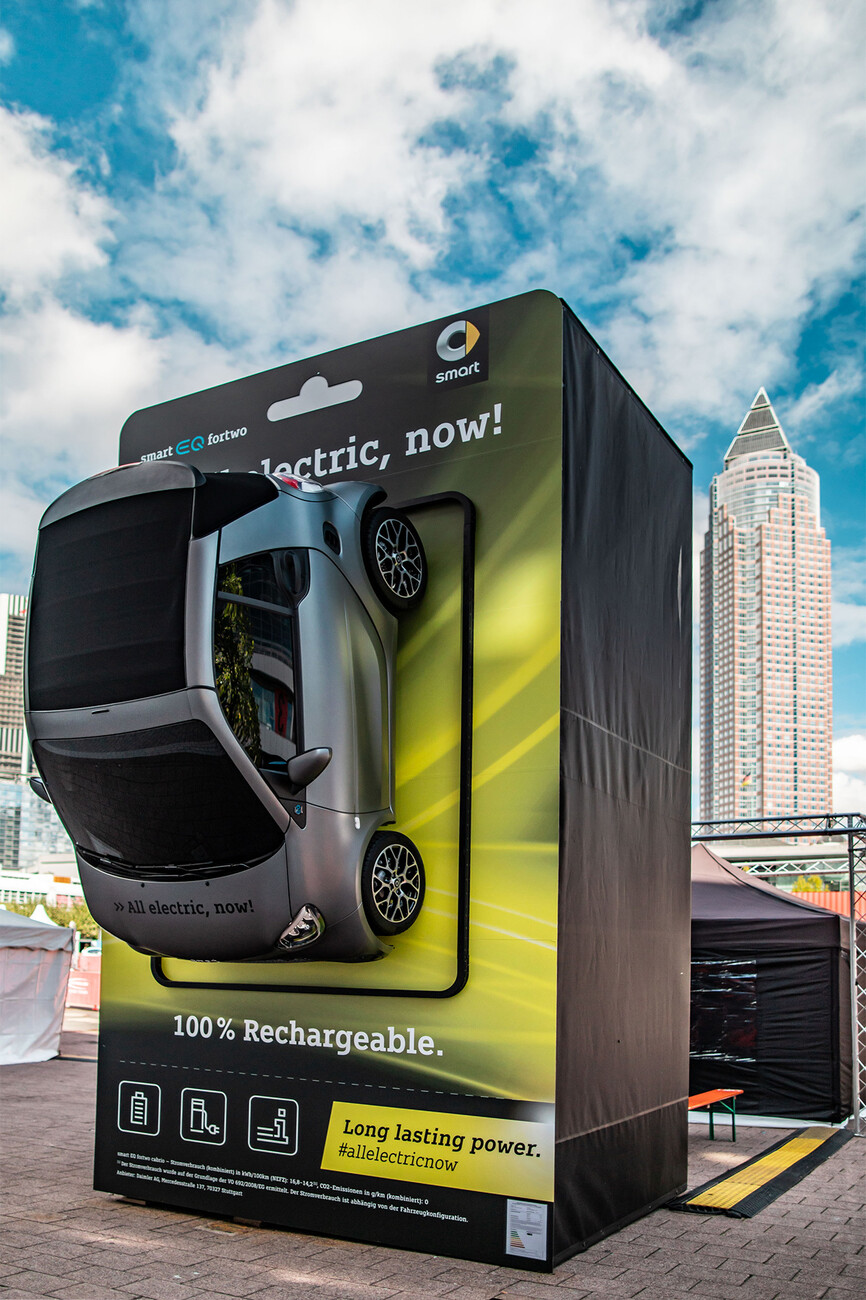Mobility
Totally electrified
Fabian Peters: As of this year smart will only be selling vehicles with electric drives. How are you going to express this radical step, which to date no other major manufacturer has dared take, in design terms?
Daniel Lescow: We have completely redesigned the front of the smart fortwo. With the new design we are going back to the early days a bit: Instead of the brand logo the radiator grill now features the iconic smart lettering. With our stand at the IAA 2019 car show we tried to highlight the enormous change in a particularly striking way, through color. The focus was on “energizing yellow” as we call it. The rhombic pattern that ran through the entire stand was another important design element. It is the same as the one that will be on the fortwo’s new radiator grill. And in future it will feature in our advertising and on our website. Our aim with this new, consistent formal idiom is to make it clear that there have been major developments at smart.
What design-related changes to the smart fortwo were necessary in order to make it electric?
Daniel Lescow: First things first: The smart has been available with an electric drive since 2007. But here’s a thing: The smart was intended to be electric from the outset. That is why its design is also ideal for an electric car – through the higher floor, the higher sitting position and the “stomach”, which was always intended for a battery. In 1998, when the very first smart was presented, the time was not yet ripe for this type of drive technology. But the history of the car’s evolution explains why the smart never had to be altered radically to accommodate an electric drive – nor does it now.
Lots of electric cars still look as if they have a gasoline engine under the hood. Do you think that the typical smart customer is more open to innovation than the average car buyer?
Daniel Lescow: Definitely. And in the future that will be a huge opportunity for us to appeal to buyers who no longer feel at home with traditional designs.
In future the smart will be produced as a joint venture between Daimler and the Chinese car maker Geely in a new factory in China. What expertise is Geely contributing to smart?
Daniel Lescow: If you really want to grow in China, the biggest market there is for electric vehicles, you also have to produce vehicles there. However, because having several production sites would make us less efficient, it means, by implication, relocating production entirely to China. And preferably operating with a partner like Geely, which has access there to a network of strong suppliers.
Apart from the fortwo, how will smart position itself as an electric brand?
Daniel Lescow: To go with the fortwo and forfour models we are considering launching another vehicle, which is where our partnership with Geely, with whom we will be developing it, becomes crucially important. The new model will enable us to operate in a market segment that in terms of sales is about six times as big. That way we can exploit economies of scale on a totally different level.
What is your strategy for ensuring that smart continues be regarded as a European product?
Daniel Lescow: smart will always be a brand that was born in Europe. In my opinion, where the vehicle ultimately comes off the production line is not going to make much difference. For us it is important to emphasize what the brand stands for and what it represents.
For years now smart has offered users of its vehicles a range of digital features. How are you advancing these particular products?
Daniel Lescow: Back in 2016 we founded a think tank, the “smart lab”, which develops new creative applications that make city life easier. It has produced solutions such as “ready to share”, which enables smart owners to share their vehicle with friends and family members: Using the keyless entry function, selected people can gain access to the vehicle with their cell phone. And the built-in pay function enables the travel costs to be invoiced. However, the owner can of course also enable a free trip.
At the moment we are advancing this sharing function as one of the partners in the major “future living” project in Berlin. With the support of well-known companies, the project is investigating the opportunities offered by what is referred to as “smart living”, which involves networked devices and functions helping residents in their everyday life. smart is responsible for closed community carsharing, for which it has made five electric smarts available.
































